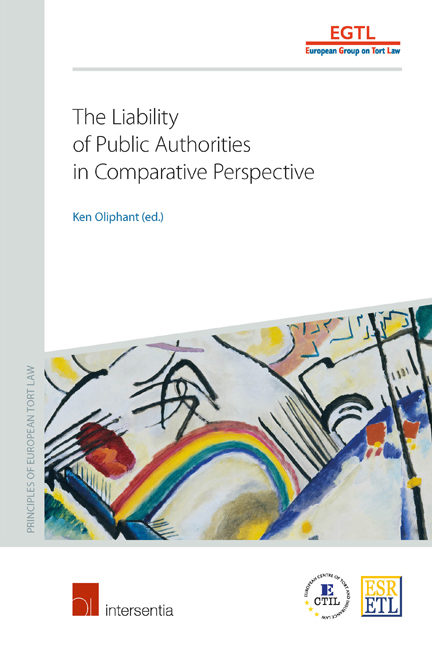Book contents
- Frontmatter
- Preface
- Contents
- List of Authors
- Introduction
- Questionnaire
- PART I PUBLIC AUTHORITY LIABILITY OUTLINED
- Austria
- Belgium
- Czech Republic
- Denmark
- England and Wales
- France
- Germany
- Greece
- Israel
- Italy
- The Netherlands
- Norway
- Poland
- Portugal
- South Africa
- Spain
- Switzerland
- The United States
- European Union
- The Liability of Public Authorities: an Economic Analysis
- PART II CASE STUDIES
- PART III CONCLUSIONS
Poland
from PART I - PUBLIC AUTHORITY LIABILITY OUTLINED
Published online by Cambridge University Press: 27 November 2017
- Frontmatter
- Preface
- Contents
- List of Authors
- Introduction
- Questionnaire
- PART I PUBLIC AUTHORITY LIABILITY OUTLINED
- Austria
- Belgium
- Czech Republic
- Denmark
- England and Wales
- France
- Germany
- Greece
- Israel
- Italy
- The Netherlands
- Norway
- Poland
- Portugal
- South Africa
- Spain
- Switzerland
- The United States
- European Union
- The Liability of Public Authorities: an Economic Analysis
- PART II CASE STUDIES
- PART III CONCLUSIONS
Summary
INTRODUCTION
OVERVIEW
The Polish legal system incorporates the rules governing the liability of the State and other public entities into civil law. A claim for compensation is considered to be a tort claim, which is subject to the general rules of the law on damages provided that the conditions of the said liability are met. While Poland follows the French model of a general clause of liability, a list of torts is additionally provided in the chapter on torts of the Civil Code. The tort of a person acting as a public authority is specifically addressed in arts 417–4172, but these are not to be considered as the entire regulation. Procedural requirements for bringing claims involving unlawful decisions, legislative acts and court judgments have recently been created and they are to be found in the respective procedural codes. Some special cases, such as the liability for unjust arrest or conviction, are subject to separate regimes. Liability for lawful acts is governed by both the Civil Code (personal injury) and administrative law (property damage).
It is commonly agreed that at present public authorities liability is nonfault liability (ie a type of strict liability). The core notion is unlawfulness of the act or omission. This standard was set by the Polish Constitution in 1997 and since then the constitutional regulation has had the greatest impact on the construction of the respective rules contained in the Civil Code and other Acts.
HISTORICAL EVOLUTION
The Evolution of State Liability between 1921 and 1997
State liability in tort has a long history in the Polish system. As a legal concept it can be traced back to 1921. Article 121 of the Polish Constitution of March 1921 provided: ‘Every citizen has the right to compensation for damage caused by organs of the State, civil or military, by reason of an official act which is against the law or the duties of service.
- Type
- Chapter
- Information
- The Liability of Public Authorities in Comparative Perspective , pp. 351 - 386Publisher: IntersentiaPrint publication year: 2016

